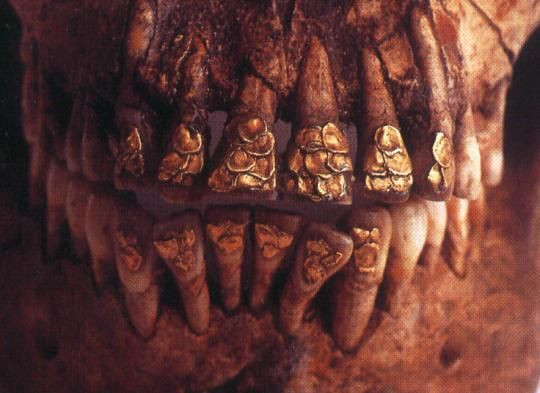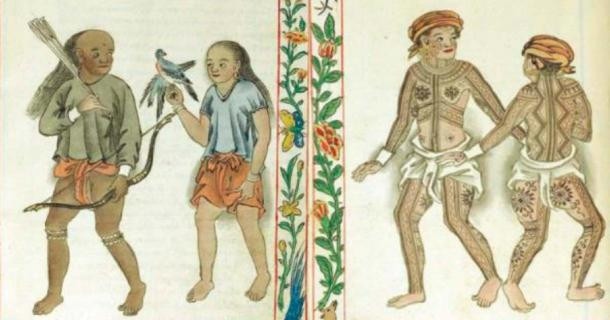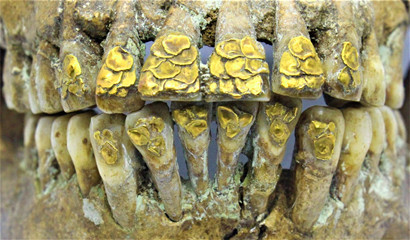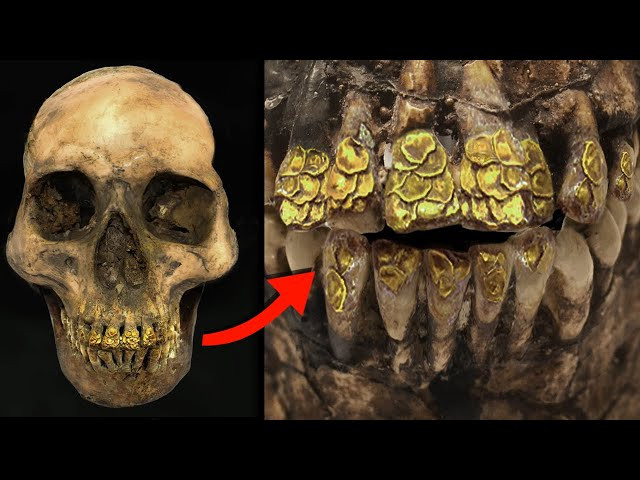A Glittering Discovery in Coastal Bolinao
In the picturesque coastal town of Bolinao, Philippines, archaeologists unearthed a treasure that would rewrite our understanding of ancient Filipino culture. The Bolinao Skull, discovered alongside 67 other skulls and Ming Dynasty ceramics, dates back to the 14th or 15th century AD. But what makes this particular skull stand out is its dazzling secret.

A Mouth Full of Gold
As researchers carefully examined the skull, they were stunned to find intricate gold dental ornamentation adorning its teeth. Delicate gold flecks, arranged in a fish-scale pattern, decorated both the upper and lower teeth. This wasn’t just any dental work – it was a masterpiece of ancient craftsmanship, with gold disks, plugs, pegs, and wire meticulously inserted into drilled holes in the teeth.

Unlocking the Secrets of Ancient Filipino Culture
More Than Just Bling
The Bolinao Skull’s golden smile isn’t just about aesthetics. It offers a window into the lives of early Philippine natives, their social structures, and their cultural practices. Gold dental work, it turns out, was a symbol of prestige and beauty in ancient Filipino society, evolving from earlier practices of staining teeth with plants and roots.

A Glimpse into a Forgotten World
Early explorers like Antonio Pigafetta, who accompanied Magellan on his 1521 expedition, documented the widespread use of gold dental decorations among native tribes. The Bolinao Skull and its companions serve as tangible evidence of this near-forgotten aspect of Philippine history.
Beyond the Smile: What the Bolinao Skull Reveals
Trade and Cultural Exchange

The presence of Ming Dynasty ceramics at the burial site suggests well-developed trade relations during the Middle Ages. This discovery paints a picture of a sophisticated society engaged in international commerce long before the formation of the modern Philippines.
Burial Customs and Social Hierarchy
The context in which the Bolinao Skull was found provides insights into ancient burial practices and social stratification. The elaborate nature of the dental work implies that its owner held a position of importance within their community.

A National Treasure
Today, visitors can marvel at the Bolinao Skull at the Pang-ulo Exhibit on the 4th floor of the National Museum of Anthropology in Manila. This golden-toothed wonder continues to captivate researchers and the public alike, serving as a shining example of the rich cultural heritage of the Philippines.

As we gaze upon the Bolinao Skull’s glittering grin, we’re reminded that sometimes, the most valuable treasures are the stories they tell – stories of ancient cultures, forgotten practices, and the enduring human desire to adorn ourselves in beauty and prestige.
